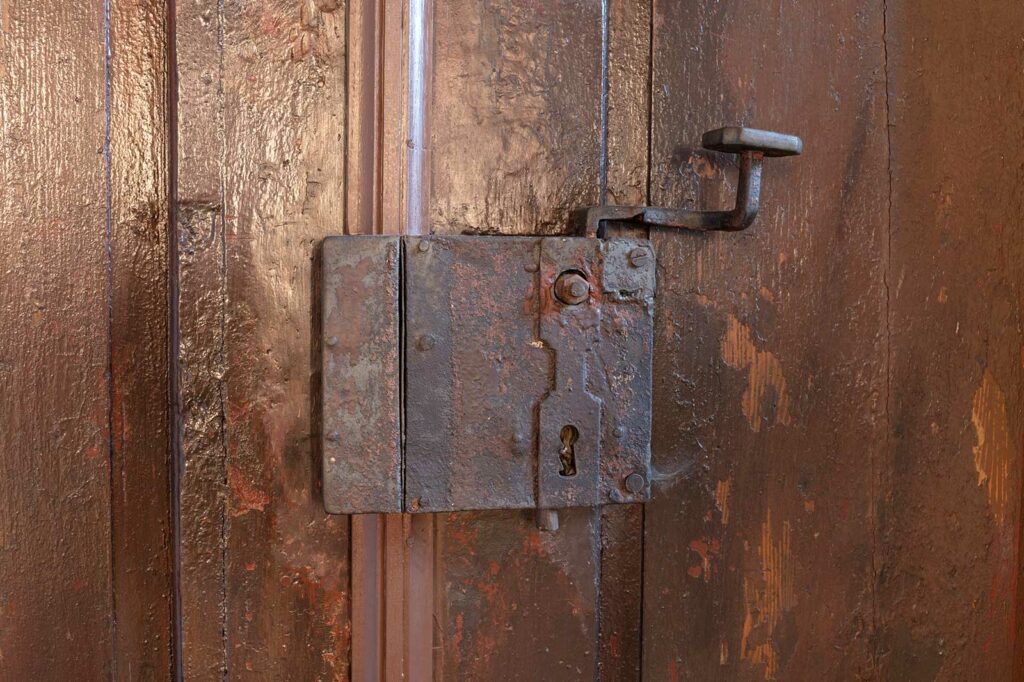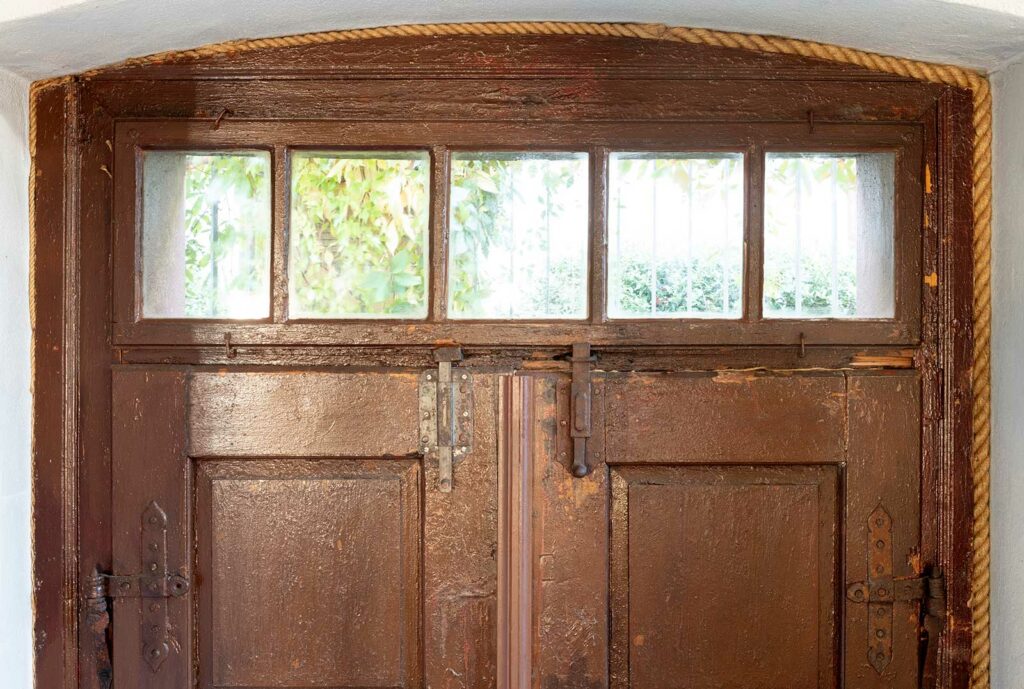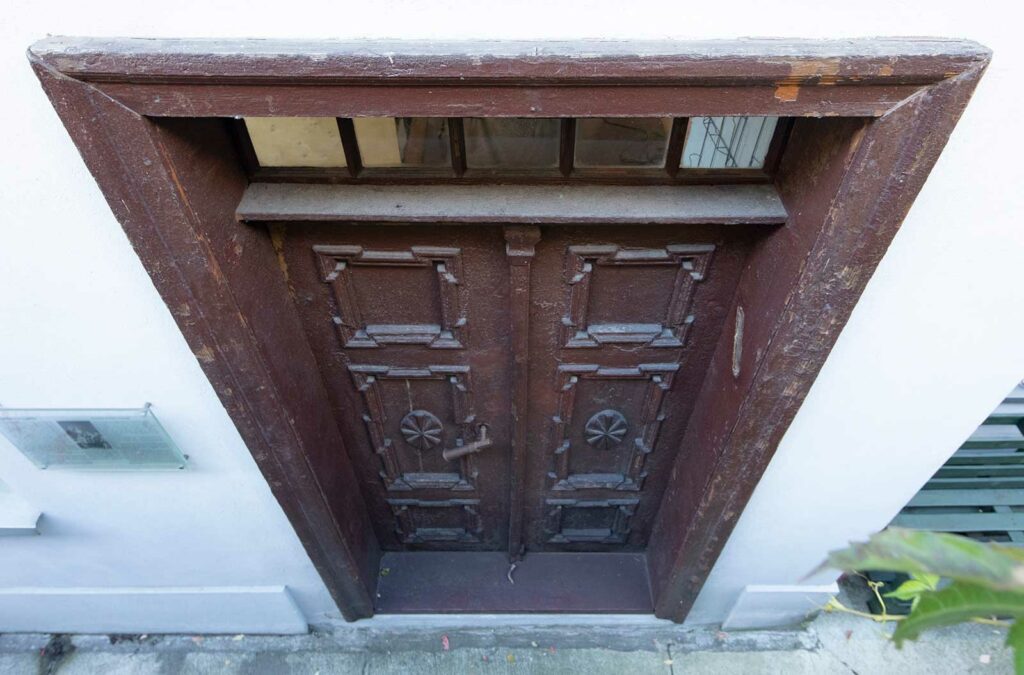A trace of the mezuzah is preserved on the door frame of the Kluger family home, which now houses the Auschwitz Jewish Center. A mezuzah is customarily placed on the right-hand door frame of a Jewish home. It is a small roll of parchment placed in a box that contains a handwritten fragment of the prayer Shema Yisrael (Hebrew: Hear O Israel), a profession of faith, from the Book of Deuteronomy (6:4-9 and 11:13-21). The building from the turn of the 19th and 20th centuries, on which this memento of the Jewish presence in Oświęcim is located, belonged successively to the following families: Wulkan, Leser, and Teichner. In 1928, the house became the property of Bernard Teichman and his daughter, Fryda Kluger. The Klugers – Fryda with her husband Symcha and children Mojżesz, Szymon, Bronia, Icchak, Melech, Izrael, Jehoszua, Chaim and Malka – lived there in the early 1930s. The Kluger family owned a chicken store. Symcha Kluger was also a melamed (Hebrew for teacher of religion). Every Saturday afternoon he gave religious commentaries in the vestibule of the Great Synagogue. Out of a family of eleven, only three siblings survived the Shoah: Szymon, Moses and Bronia. After World War II Bronia and Moses emigrated to the USA, while Szymon went to Sweden. In 1961, Szymon Kluger returned to Oświęcim and settled in the family house. He died on May 26, 2000, and was buried at the local Jewish cemetery. With his passing, the 400-year-long Jewish presence in Oświęcim came to an end. In 2002, Bronia Rosenblatt and Moses Kluger donated the house to the Auschwitz Jewish Center.
| Inventory number: | MZ-49-O |
| Name: | Trace of mezuzah |
| Source: | Auschwitz Jewish Center in Oświęcim |
| Dating: | turn of the 19th and 20th centuries |
| Dimensions: | basic: width 2,3 cm, length 16,5 cm, depth 1,7 cm |
| Material: | wood |
| Execution technique: | no information |
Digitalisation: Regional Digitalisation Lab, MIK, Oshpitzin means Oświęcim project.




